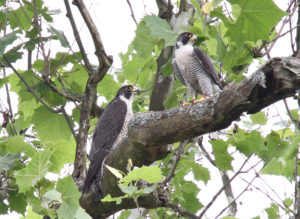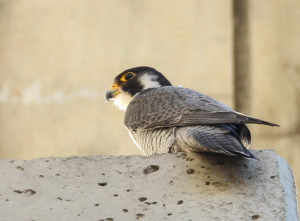As a volunteer at Cuyahoga Valley National Park for 10+ years, Gene Stepanik knows a thing or two about life in and around the valley. As a wildlife watcher, hike assistant, scenic railroad volunteer, speaker’s bureau presenter and Elf at the North Pole for the Polar Express – people often turn to Gene with questions about where to go and what to do. In this ongoing series, Gene shares some of his favorite spots within the park.
If you’ve ever driven north on Riverview Road from Peninsula, you’ve crossed under the I-80 Ohio Turnpike Bridge. And, chances are, you’ve not given it a second thought – except to lament the way park life intersects with modern-day commuter realities.
Gene suggests you stop and look a little closer.

There, you’ll find Gateway and Trailblazer, a pair of peregrine falcons nesting over the Cuyahoga River. The duo can be seen year-round in this area south of the Boston Store Visitor Center; and, chances are, Gene might be there to help you take a look. He’s often there weekly with a spotter’s scope.
“These birds are pretty amazing. Considering they were on the endangered species list not that long ago, it’s wonderful to watch them,” Gene says. Like bald eagles, the peregrine falcon population was severely impacted by DDT – a pesticide used up until 1972. Recovery efforts have helped the bird, and in 1999 it was removed from the U.S. Endangered Species list.

“Watching the nest is probably one of my favorite volunteer activities right now. You get to meet so many birding enthusiasts who study and really appreciate the power of these birds.”
Gene helps visitors not only look at the birds but also understand what makes them so important. When peregrines are on the hunt for prey, they can reach speeds of up to 200 miles per hour or more – making this species one of the fastest birds in the world. Like many birds of prey, they’re critical in helping with the overall health of the environment, keeping other species (like pigeons) in check. “I’m often asked about the nest: ‘why is it here?’” Historically, peregrines prefer to nest on rock cliffs. As cities with skyscrapers began popping up, the falcons adapted. Now they often use window ledges and other niches for their home base. “They go where the food is,” Gene says.
Although you can see the birds year-round, spring and summer are the best times to view any fledglings. For more information, visit: https://www.nps.gov/cuva/peregrine-falcons.htm





